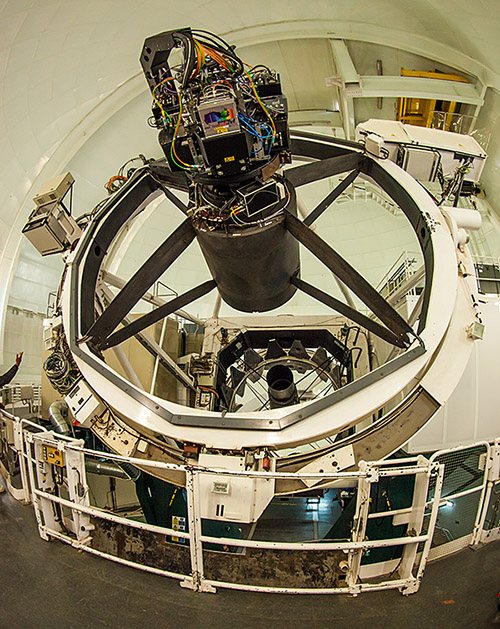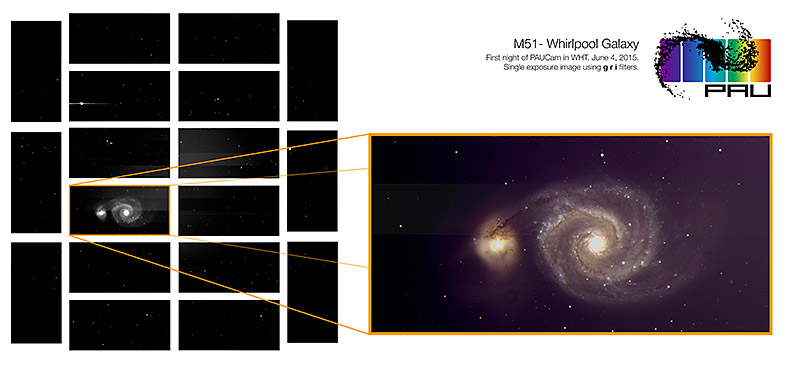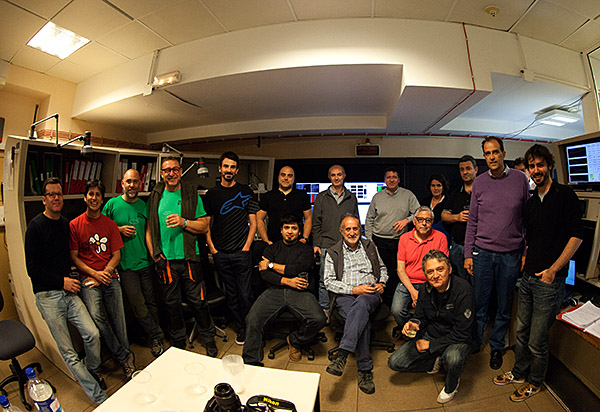ING web news release
11 June, 2015
First Light on PAU Camera
The camera for the PAU (Physics of the Accelerating Universe) project succesfully saw first light at the prime focus of the William Herschel Telescope on the night June 3rd. PAUCam is an advanced imager comprising a mosaic of 18 state-of-the-art, fully-depleted, red-sensitive Hamamatsu CCDs, and a field of view with a diameter of about one degree (or about 11 times the sky area covered by the WHT's current prime-focus imager), of which 40 arcminutes are unvignetted. PAUCam was designed and built by a consortium of Spanish institutions (IFAE, ICE-CSIC/IEEC and PIC from Barcelona; CIEMAT and IFT-UAM/CSIC from Madrid).
|
 |
PAUCam mounted on the William Herschel Telescope. Credit: PAU team [ JPG ].
|
PAUCam was built to carry out the PAU Survey, designed to study the existence and properties of dark energy using galaxy Redshift Space Distortions and Weak Lensing Magnification as cosmological probes. For this purpose, PAUCam will image up to 2 square degrees per night in 40 narrow-band and 5 broad-band filters to i AB~23, providing low-resolution (R~50) photometric spectra for around 30,000 galaxies, 5000 stars and 1000 quasars per night.
|
 |
First light images of M51 Galaxy. Credit: PAU team [ JPG ]. |
PAUCam can be also used as a community instrument, to obtain the spectral-energy distributions of very large samples of objects, allowing the study of a variety of scientific topics. In addition to the existing set of narrow- and broad-band filters, it is also possible for users to mount their own special-purpose filters.
|
 |
PAUCam first light team at the WHT control room. Credit: PAU team [ JPG ]. |
|



